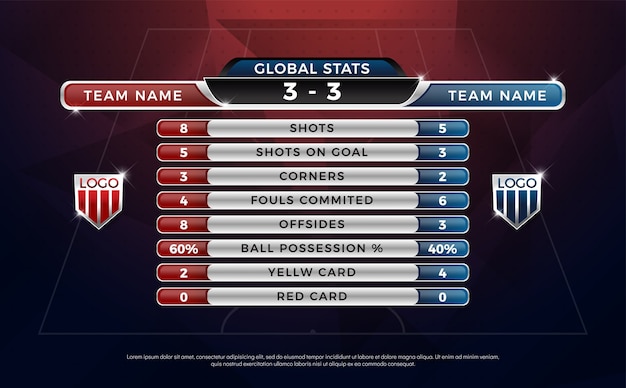Anúncios
As we approach the thrilling whirlwind that is March Madness, I find myself overwhelmed by the sheer anticipation that grips college basketball fans nationwide. This tournament isn’t just a sporting event; it’s a cultural phenomenon that sparks passion and camaraderie among fans, filling bars, offices, and living rooms with fervent discussions about which teams will rise and which will fall.
Did you know that statistically, only 1 in 9 million brackets achieve the perfect score? Each year, approximately 70 million brackets are completed, highlighting the excitement and challenge involved in predicting outcomes. It’s both exhilarating and daunting to attempt to decode the unpredictable nature of this tournament, where underdogs often topple giants and madness ensues. Let’s dive into the world of March Madness bracket predictions and uncover strategies to enhance our chances of success.
Anúncios
Understanding March Madness
Key Factors in Making Predictions
Injuries present another layer of complexity; a star player’s absence can drastically alter a team’s chances. Monitoring injury reports and their potential impact on both team performance and morale is essential for making informed predictions.
Finally, the rise of analytics has transformed the sports landscape. Metrics such as player efficiency ratings, offensive and defensive efficiencies, and advanced statistics offer insights that go beyond traditional box scores. By merging these elements—team performance, injury status, and analytics—predictors can create a more holistic view, ultimately enhancing the accuracy of their March Madness bracket predictions.
Expert Insights and Strategies

Anúncios
Moreover, integrating advanced metrics, like KenPom ratings and adjusted offensive/defensive efficiencies, provides a more nuanced outlook on matchups. These metrics shed light on teams that might outperform expectations. Experts also recommend diversifying your bracket by mixing safe picks with a few bold choices, aligning with historical trends where unpredictability reigns. By utilizing these insights, enthusiasts can bolster their odds of making informed March Madness bracket predictions.
Common Mistakes to Avoid
Another frequent pitfall is neglecting to consider player injuries and team dynamics. Predictive models often fail to adequately capture the impact of a star player missing a game or shifting locker room chemistry. Stay updated with the latest news and adjustments leading up to the tournament to ensure comprehensive predictions.
Additionally, relying on past performance in earlier tournaments without contextualizing current situations can mislead predictions. Teams evolve, and historical data should be balanced with recent performance metrics. Embrace a blend of historical awareness and current analytics to refine your approach.
Lastly, many novice predictors overlook the element of randomness inherent in March Madness. While statistical analysis is essential, embracing some unpredictability can enhance your strategy. Recognizing that upsets are inevitable can keep your predictions grounded yet innovative. Approach the bracket with an open mind to increase your chances of mastering March Madness predictions effectively.
Frequently Asked Questions about March Madness Predictions
Here are some common questions that can help deepen your understanding of successful bracket predictions for March Madness.
- What are the best sources for up-to-date player injury reports?
Staying informed from reputable sports news outlets like ESPN, CBS Sports, and team-specific websites can provide the latest updates on player injuries and team dynamics. - How should I weigh historical performance against current season metrics?
Evaluate both aspects by considering historical trends but prioritize recent performance, injuries, and matchups. This balanced approach can give you a clearer picture. - What tools or resources can help with predictive modeling?
Many analysts use statistical software like R or Python for model building. Additionally, websites and platforms like KenPom, FiveThirtyEight, and NCAA.com offer useful analytics. - How often do lower-seeded teams win in March Madness?
Historically, lower-seeded teams pull off upsets about 15-20% of the time in the first round, increasing in later rounds, so it’s essential to keep an eye on potential Cinderella stories. - What strategies can I use to embrace randomness in my predictions?
Consider using a mix of intelligent predictions with some random selections for a few matchups. This strategy can potentially capture unexpected outcomes that are common in the tournament. - Are there specific metrics I should focus on for evaluating teams?
Key metrics include offensive and defensive efficiency, turnovers, rebounding rates, and free throw percentages, as they provide a comprehensive view of a team’s capabilities.
Success Stories from Past Tournaments
Throughout the years, March Madness has seen a variety of memorable moments that have left fans and analysts alike in awe. For instance, during the 2017 NCAA Tournament, several experts successfully predicted the surprising rise of an 11-seed team to the Final Four. These bold bracket predictions not only showcased the unpredictability of the tournament but also solidified the credibility of those who dared to think outside the box.
Similarly, in 2021, a notable underdog story emerged as an 8-seed went further than anyone anticipated. This outcome was predicted by a handful of analysts who recognized trends in team performance and player statistics, emphasizing the importance of data analytics in making informed predictions. Such examples illustrate that success in March Madness bracket predictions stems from a combination of insight, research, and perhaps a touch of intuition.
Moreover, the 2019 tournament featured experts who accurately forecasted the triumphant path of a 3-seed to the championship. Their methodology included analyzing matchups, examining past performances, and even considering factors like team chemistry and coach experience. These successful predictions not only provided value to fans but also demonstrated the intricacies involved in crafting an effective March Madness bracket.
Incorporating these success stories into the discussion allows aspiring predictors to understand the critical elements that contribute to accurate forecasting. By sharing reliable strategies gleaned from past tournaments, individuals can enhance their own predictions while cultivating a deeper appreciation for the unpredictability of March Madness.
Enhance Your Bracket Predictions with Expert Insights
For those looking to refine their March Madness forecasting skills, explore strategies from professionals in the field: Action Network – March Madness Bracket Prediction Strategies.